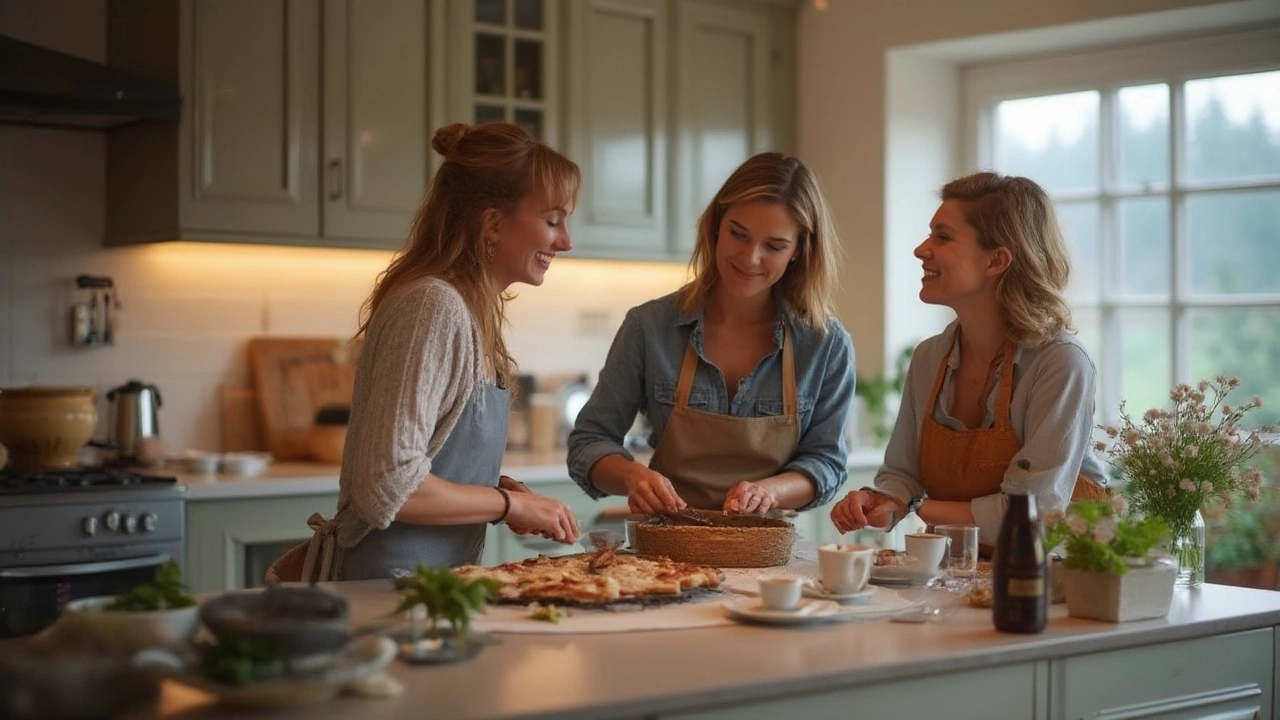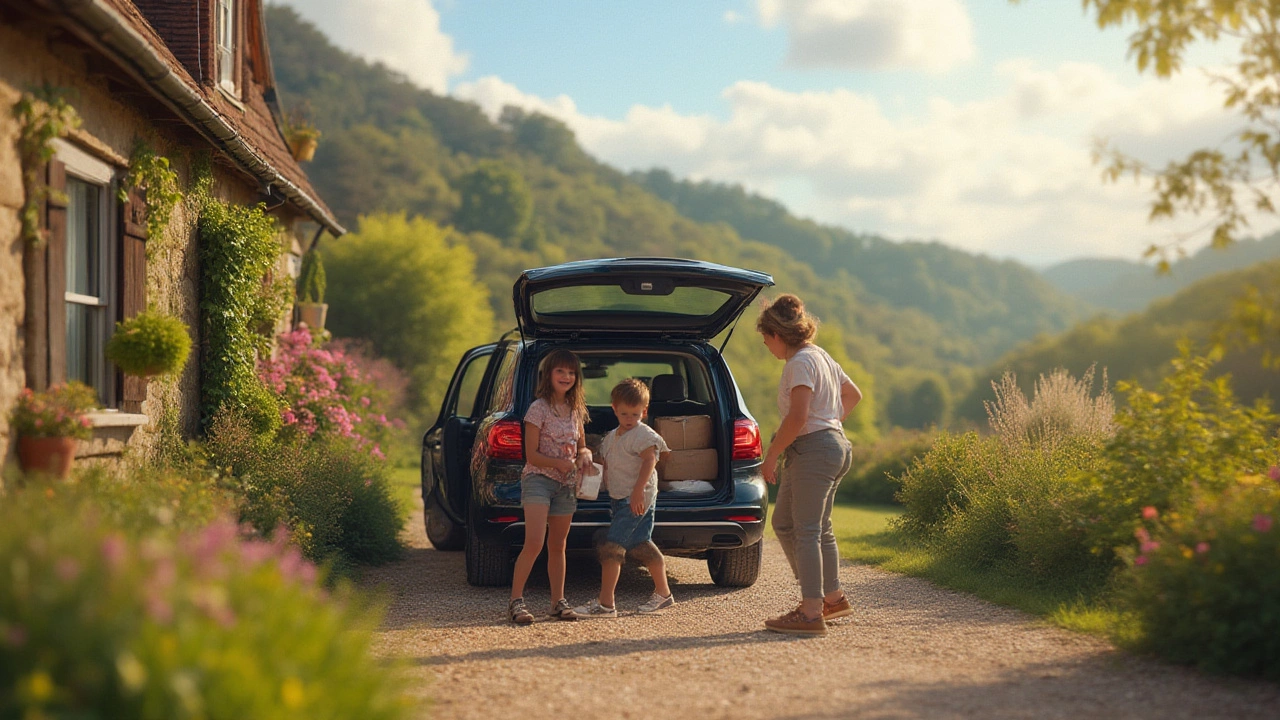You ever looked at a holiday listing and wondered, "What on earth does self-catering property mean?" If your mind jumps to making packed lunches as a kid, you're not actually too far off—but there’s a whole lot more freedom and opportunity packed into this simple phrase. Self-catering properties have exploded in popularity since 2020. Platforms like Airbnb, Vrbo, and Booking.com reported a 30% uptick in self-catered holiday bookings in the past three years alone. It's not just about saving money; it's about feeling at home, your way, wherever you happen to be.
What Is a Self-Catering Property?
Let’s clear up the basics right away. A self-catering property is any accommodation where you’re responsible for your own meals and daily living once you arrive. This can mean cottages, villas, apartments, or even city flats—the key is, you get your own kitchen and living space. Unlike a hotel, which might come with cleaning services or onsite restaurants, self-catering places leave those choices up to you. You shop for groceries. You decide what and when to eat. You clean (at least while you’re there), and you make the space your own for the duration of your stay.
Here’s an interesting tidbit: According to a 2023 survey by Statista, over 57% of millennial travelers prefer self-catering stays for trips longer than three days. It’s not just families either—couples, friend groups, retired folks, and even solo travelers like the autonomy. The draw? Total control over your schedule (and your wallet). You can cook that local seafood you bought at the harbor market or order delivery if you’re feeling lazy. Craving eggs at midnight? Go for it—nobody bats an eyelid.
Some people mix up self-catering with serviced apartments or aparthotels. Here’s the line: if someone else is regularly cleaning up after you or filling the fridge, it’s not fully self-catering. These properties might come with basic supplies (a couple of dishwasher tablets, some tea, maybe olive oil), but don’t expect daily room service or a pampering breakfast buffet. The sense of independence is kind of the whole point.
In case you're curious about which kinds of places count as "self-catering," here are some examples:
- Holiday cottages and cabins in the countryside
- City apartments and flats (think London studio or New York loft)
- Beach houses with full kitchens
- Quirky options like boats, tiny houses, or eco-lodges (as long as there’s a working kitchen)
One thing worth noting: the "self" in self-catering isn’t all or nothing. Some properties will drop off a starter food basket, others offer cleaning for a fee. But the heart of the deal is that the property isn’t doing everything for you. It’s a home from home, not a full-service hotel.
Why Choose Self-Catering? The Main Benefits
If you’re picturing yourself flipping pancakes in a cozy kitchen on your next trip, you’re in good company. The flexibility is the number one reason people book self-catering properties. Want breakfast in pajamas at noon? No one’s judging. Prefer roasting local veg to running out for fast food? Totally up to you.
Here are some of the clearest perks:
- Privacy. You avoid lobby crowds, set your own pace, and make the place your own. Especially if you’re holidaying with family or friends, not having to ‘share’ space with strangers is a winner.
- Cost control. Eating out every meal burns a hole in your wallet fast. Shopping at local markets and cooking in can cut your food spend by up to 60%, according to the UK’s MoneySavingExpert.
- Room to spread out. Hotel rooms can get cramped, especially with kids. Self-catering usually means multiple rooms, maybe even a garden or balcony. This is gold if you want quiet evenings or al fresco dinners.
- Freedom to choose. You pick your own menu, meal times, and daily routines. If someone’s a picky eater, or if you want to whip up a favorite dish from home, go ahead. No funny looks from anyone.
- Local experience. Shopping at butcher’s counters or picking up cheese from a corner shop immerses you in the local culture way more than just hitting the nearest chain restaurant.
- Good for groups. Compared to booking several hotel rooms, a shared self-catering house can work out far cheaper—and feels a whole lot more sociable.
One extra point: during the height of COVID-19 travel restrictions, self-catering properties were among the quickest to bounce back. Why? They felt safer—no crowded dining rooms, minimal contact with other guests, just your group and your space. Cleanliness is in your hands, which made a huge difference for a lot of people.
Check out this data table showing average cost savings per week for a family of four in the UK (2024):
| Accommodation Type | Average Price per Week | Average Food Spend (Self-Catered) | Average Food Spend (Eating Out) | Potential Savings |
|---|---|---|---|---|
| Hotel (4-star) | £1,800 | n/a | £720 | — |
| Self-Catering Cottage | £1,100 | £180 | n/a | £1,240 |
This table isn’t even factoring in the value of being able to just kick back and use a washing machine, lounge about on a sofa, or brew a fresh pot of coffee whenever you want. All the little comforts add up.

What to Expect Inside a Self-Catering Property
You might be thinking, "Okay, but does self-catering mean basic and barebones?" Not at all. Standards can swing from rustic cabins to five-star penthouses, but most listings are up front about what’s included. Here’s what you should expect—and a few hacks for making sure you don’t get surprised.
At a minimum, a decent self-catering property gives you:
- A kitchen or kitchenette (fridge, hob, oven or microwave, kettle, toaster—ideally all present)
- Utensils (pots, pans, cutlery, plates, mugs, and glasses)
- Basic cleaning stuff (washing-up liquid, sponges, maybe a dishwasher)
- Bedding and towels (unless it’s a super budget stay—always double-check!)
- Private bathroom
- Living area (sofa, TV, sometimes games or books)
- Wi-Fi in most places, though rural spots can be patchy
Some hosts will throw in little extras (herbs, cooking oil, tea bags), or welcome packs with snacks and local maps. If you have dietary allergies or are travelling with babies, let the owner know—often they can help with highchairs, cots, or gluten-free options.
Look for clear photos in the listing. Do the cupboards have enough plates for everyone? Is there a proper oven, or just a microwave? Is the parking free, or will you be curb-hunting every night? For anyone planning to cook real meals, check for things like sharp knives and salad bowls—tiny details, but they matter after a long road trip.
One thing that separates a great self-catering stay from a mediocre one? Local advice from owners. Many hosts leave guides on where to get the freshest bread or the tastiest gelato, plus emergency numbers and cheat-sheets for local buses. The best hosts will answer questions quickly—they know a happy guest leaves good reviews.
Don’t be shy about messaging the host before you book. Ask about:
- Nearest grocery shops or markets (walking distance or need a car?)
- Heating/air conditioning (important for winter/rural or city heatwaves)
- Laundry options (handy with kids—or hikers!)
- Check-in and check-out times (flexibility matters if you’re on a late flight)
- How the keys are handed over (keybox code, meet-and-greet, smart locks?)
The more you know, the better you can relax when you arrive. And word to the wise—always check the reviews for mentions of noise, dodgy plumbing, or mystery smells!
How to Get the Most From Your Self-Catering Stay
So you’ve picked the right spot, you have your confirmation email—now what? Here are some top tips from regular travelers and hosts to get the most out of your self-catered holiday:
- Pack some basics. Even if your host supplies a starter set, bring your favorite coffee, a travel spice kit, or a sharp knife if you plan to do real cooking.
- Plan your first meal. Arriving late? Pack something easy to cook or pick up takeaway on the way, rather than battling for the last loaf of bread at the mini-mart at midnight.
- Hit local markets early. You’ll get better produce and sometimes bulk discounts. In France and Italy, farmers’ markets often close up before lunch, so don’t leave it too late.
- Embrace the freedom. If the weather’s bad, cancel your plans and lounge—because you literally have all the comforts and the whole schedule is up to you.
- Try a local recipe. Ask the host for tips, or find a dish that uses ingredients unique to where you’re staying. Cooking together becomes a fun family memory.
- Keep it tidy. Most owners expect you to leave the place reasonably clean. Empty the bins, do the dishes, maybe give the floor a quick sweep—big karma points and you keep Airbnb ratings happy.
- If you’re headed somewhere remote, buy big before you arrive. Some rural cottages in Scotland, Wales, or the Highlands are miles from the nearest store—plan ahead so you’re not living on instant noodles the whole week.
- Be energy conscious. Use heating, air-con, and appliances responsibly—it’ll save you from extra fees and is better for the planet.
- Read the guestbook. Genuine advice on hidden beaches, best ways to avoid traffic, and the strongest coffee in town often live here, crowdsourced from guests before you.
And here’s a pro move: if you love a spot, ask the host if you can book direct next time—you might snag a discount, and you’ll both save on fees. Loyalty pays off just as much here as anywhere else.
So, what does self-catering property really mean? It’s about personal space, freedom, and having your holiday on your own terms. Whether you want a rustic farm stay, a modern city loft, or a sun-drenched beach house, you’re in the driving seat. Set your pace, bring your favorite snacks, and genuinely relax. That’s something even the fanciest hotel can’t always deliver.

